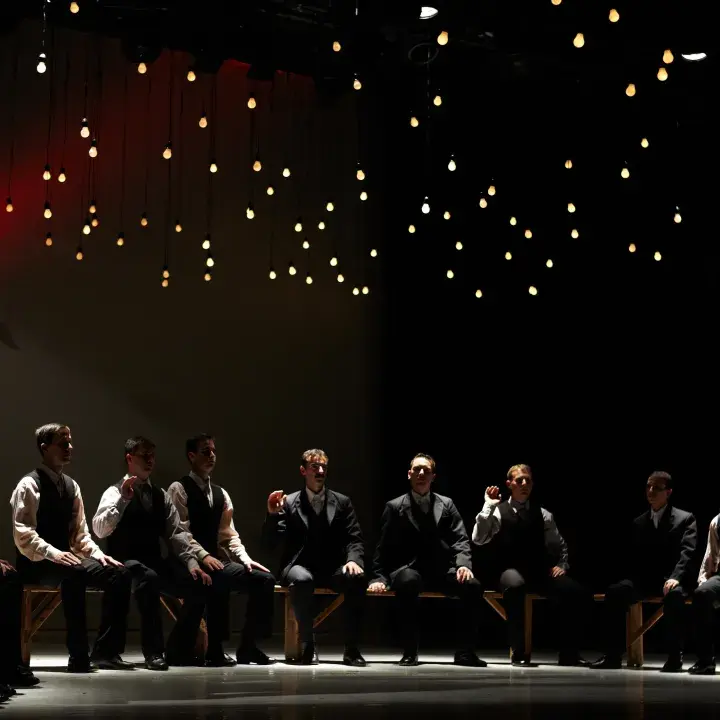The Hungarian State Folk Ensemble’s Mezőség – Microcosm draws on the music and dance traditions of the region of central Transylvania known as the Mezőség. Located north of the city of Kolozsvár, this rolling landscape of hills and shallow valleys has oft been likened to a “dead sea” –an apt simile, given that millions of years ago, the landscape lay beneath a billowing Pannonian Sea, known today from the sediments it left behind.
In the Mezőség, the geological process by which the wealth of the ancient deeps was laid down by relentless waters was to be mirrored in our age by the gradual accumulation of cultural treasures born of the hearts and minds of the region’s peasants. The hundreds of villages nestled in the Mezőség’s valleys are home to Hungarians, Romanians, and Roma, peoples who have lived together, inspiring and learning from each other, for centuries. It was this population that synthesised and safeguarded for us what is perhaps the richest, most colourful music and dance culture of the Carpathian Basin, a tradition that is multilingual, yet decidedly unified.
The creators of this performance understand not only that our hope for the future lies in the past, but that beyond this, there is reason to learn about the past where knowledge can be transformed into a driving force for the future. “Tradition merits attention if it can be continually recreated, an act that can only stem from within,” says director/choreographer Zoltán “Batyu” Farkas of his own relationship with tradition. This is the route every generation since Bartók that has been guided by the arts and drawn nourishment equally from both past and present has sought to take.
The aim of Mezőség – Microcosm is not merely to engage in “archaeological preservation” or to offer a demonstration of the music and dance traditions of the region, but also, and equally importantly, to examine the relationship between the modern individual and this incredibly rich and varied repository of music and dance, in this case from the vantage point of urban “high” culture. In this way, the show communicates both a necessary and unavoidable reinterpretation of culture as part of the relationship between community and individual, and, in addition, the need not only to preserve such culture, but also to rediscover and recreate it on a continual basis.
Performed by: The Hungarian State Folk Ensemble dancers and orchestra,
With invited guest musician László Mester

